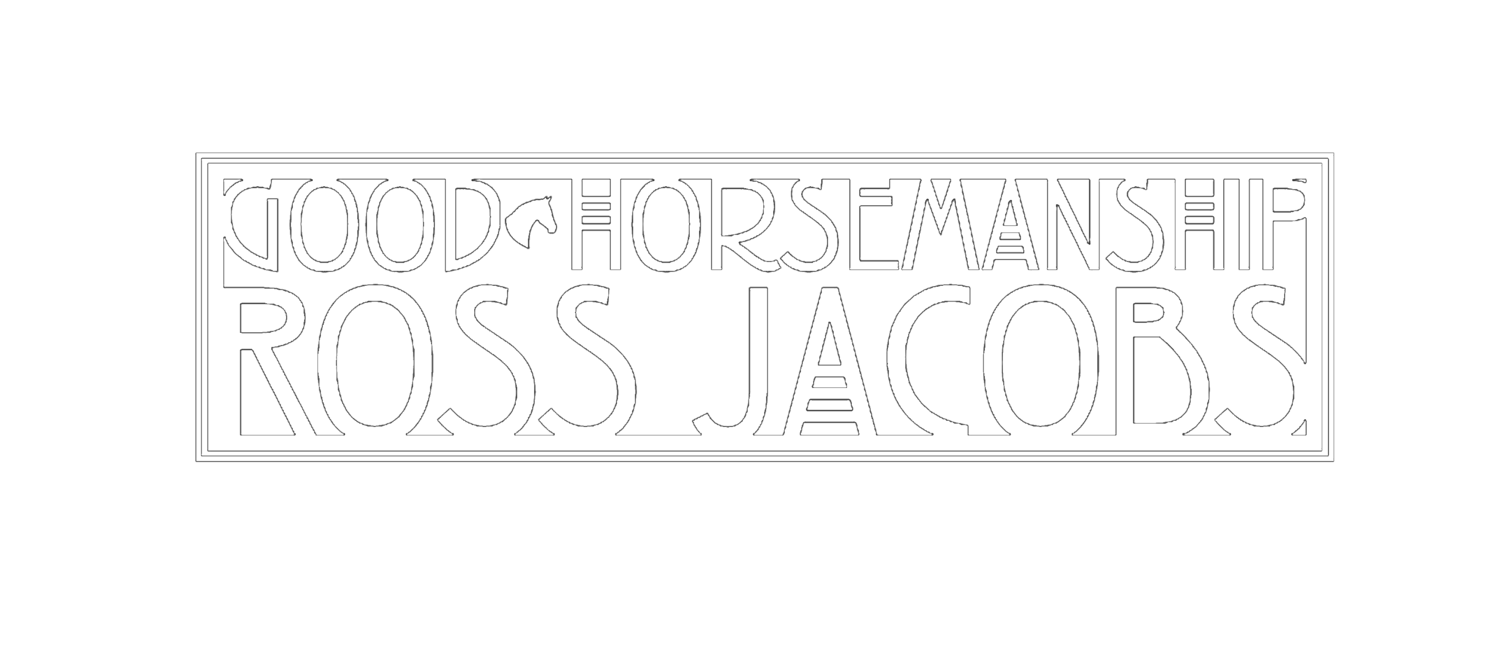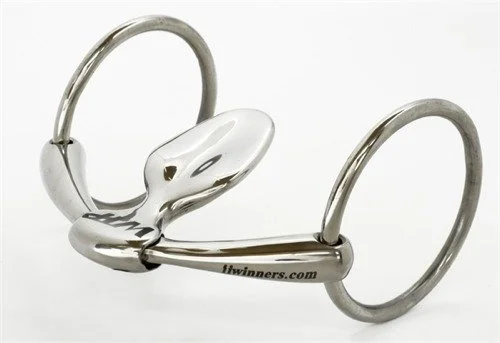I want to talk about gadgets. It is a highly controversial subject and tends to evoke extreme views from both proponents and opponents.
Before discussing them, it would be best to define what we mean when we talk about gadgets. What is a gadget? I can’t speak for anybody else, but for this discussion, my idea of a gadget is any device (i) that the human cannot use with feel, and/or (ii) by their design imposes a behaviour on a horse.
This may not be a terribly satisfactory definition, and you may be able to think of gadgets that don’t fit into that category or perhaps tools that do fit within the bounds of gadgets, but are not considered gadgets. Each person has their own idea of what defines a piece of equipment as a gadget.
The sort of devices that I feel can be described as gadgets are tie downs, nosebands, side reins, training hobbles, chambon, pessoa, blinkers, etc, because the human can not use them with feel and make adjustments moment to moment in how they are applied, is not possible.
Items that I don’t believe fall into the category of a gadget are bits, whips, spurs, side pull, flags, halters, etc. The effectiveness of these devices as communication aids is entirely dependent on the input from the rider or handler.
Both gadgets and non-gadgets are designed to convey an idea to a horse. Nevertheless, when a device works without the need for a rider or handler to present feel through the device, the idea now becomes imposed on a horse. Any time a human cannot constantly adjust the feel that a horse experiences, the device becomes a gadget.
But what is so wrong with using a gadget to communicate an idea to a horse?
In good horsemanship, we want our idea to become the horse’s idea. Remember, I’m talking about what the horse is thinking, not what it is doing. If it has the same idea we want it to have, it will do as we hoped because a horse is always trying to do what it is thinking. The most important component of helping a horse to have the same thought as us is to encourage it to search through all of its options.
This means we allow our horse to have choices. If we make the idea we want our horse to have appear like it is the best option, it will dismiss the not-so-good ideas. The important part here is that our horse decides for itself that out of all the available choices, the one we wanted it to choose is the best. It dismisses the others as a bad idea. Our idea becomes their idea by choice.
When presenting a horse with an idea, we are always competing with alternative thoughts that may appear to a horse. By allowing our horse to explore those alternative ideas, we allow it to reject each of them one by one until it finds the best idea. When it discovers the idea that our horse believes provides safety and comfort, there will be minimal resistance and trouble between us.
This is where gadgets fail us. By their nature, gadgets do not allow a horse to freely explore alternative choices. A horse never gets to dismiss a bad idea because it never gets to explore it as an option and decide for itself that it didn’t work out well. Instead, the gadget just imposes the response or behaviour we want and leaves the alternative idea as a potential choice in a horse’s mind.
Let’s look at an example of this. Tongue-plates are used to prevent horses from putting their tongue over the bit. A horse that wants to put its tongue over the bit does it for a reason. It is usually searching for safety and/or comfort, and putting the tongue on top of the bit is part of its exploration to find the best response. A tongue-plate physically blocks the tongue from being placed over the bit. However, it does not address the reason why a horse keeps trying to get its tongue over the bit. It just minimizes the behaviour. It never becomes the horse’s idea to not get its tongue over the bit, so the horse never feels okay about the tongue-plate. It also never entirely dismisses the possibility of one day trying to put its tongue over the bit again. This same principle applies to just about any gadget I can think of.
I sometimes hear that the problem with gadgets is that people don’t know how to use them correctly. When used properly, they are a great help to a horse. Often, side reins are cited because the Spanish Riding School, one of the esteemed centres of classical riding, invented them. I have been told that if the SRS uses them, they must be a good idea. But of course, this is nonsense. The SRS does not own “good ideas” when it comes to training horses. Just because they are good at what they do does not mean that what they do is good. In my opinion, to justify the use of side reins requires a better reason than the Spanish Riding School uses them.
The desire of people to solve a problem as easily and quickly as possible is why gadgets have become so popular. They are a shortcut means of getting something done. My response to people who say that when a gadget is used correctly, it can be a great benefit to a horse is that if you don’t know how to train a horse without the use of the gadget, then you don’t have the skill to use them “correctly”. The simple answer is that they are just anti-good training.
Having said all that, I will admit that I have trained my horses to wear hobbles. It has always been in preparation for travelling on long-distance treks, where it has been necessary to allow my horses to graze overnight. Hobbles enabled the horses to move about while grazing, but restricted their roaming while I slept at night. This was so I didn’t spend half of the next day looking for them.
Training horses well is a skill that is learned over a long time. It is not possible to circumvent the process by taking shortcuts. The behaviour that gadgets are intended to shape is something that good horse people learn along the way to becoming good horse people. A person cannot learn to be a talented trainer by resorting to gadgets because they undermine the process of becoming a good horse person.
Photo: this is a tongue plate and politely referred to as a "training aid."
This is a tongue plate and politely referred to as a "training aid."

